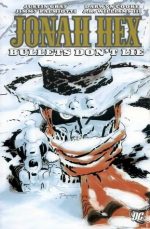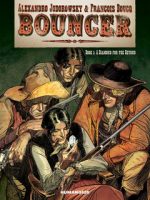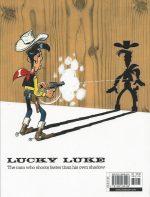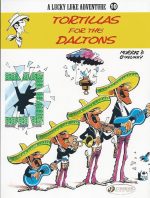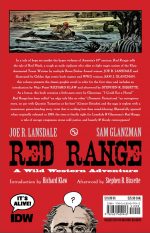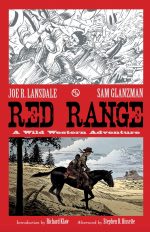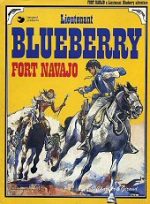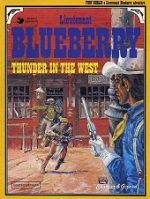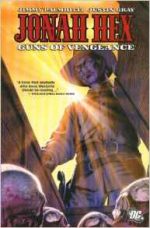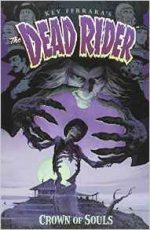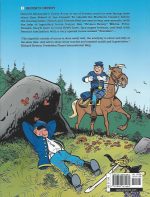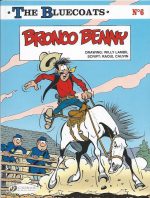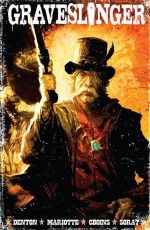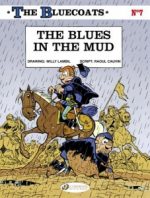
By Willy Lambil & Raoul Cauvin, translated by Jerome Saincantin (Cinebook)
ISBN: 978-1-84918-183-9
Les Tuniques Bleues began at the end of the 1960s, created by Louis “Salvé†Salvérius & Raoul Colvin – who has solo-written every best-selling volume since. The strip was created to replace Western wonder man Lucky Luke when the laconic gunslinger defected from weekly anthology Spirou to comic rival Pilote. His rapidly-rendered replacement swiftly became one of the most popular bande dessinée series on the Continent…
Salvé was a cartoonist of the Gallic big-foot/big-nose humour style, and when he died suddenly in 1972 his replacement, Willy “Lambil†Lambillotte slowly introduced a more edgy and realistic – although still broadly comedic – illustrative manner. Lambil is Belgian-born (in 1936) and – after studying Fine Art in college – joined publishing giant Dupuis as a letterer in 1952.
Born in 1938, scripter Raoul Cauvin is also Belgian and before joining Dupuis’ animation department in 1960 studied Lithography. He soon discovered his true calling as a comedy writer and began a glittering and prolific career at Spirou.
In addition to Bluecoats Cauvin has written dozens of other long-running, award winning series including Cédric, Les Femmes en Blanc and Agent 212: more than 240 separate albums in total. The Bluecoats alone has sold more than 15 million copies.
The sorry protagonists of the show are Sergeant Cornelius Chesterfield and Corporal Blutch: a pair of worthy fools in the manner of Laurel and Hardy; hapless, ill-starred US cavalrymen posted to the wild frontier and various key points of mythic America.
The original format was single-page gags about an Indian-plagued cavalry fort, but with the second volume ‘Du Nord au Sud’ (North and South) the sad-sack soldiers went back East to fight in the American Civil War (this tale was rewritten in the 18th album ‘Blue rétro’ to describe how the chumps were drafted into the military during the war).
All subsequent adventures – despite ranging far beyond the traditional environs of America and taking in a lot of genuine and thoroughly researched history – are set within the timeframe of the Secession conflict.
Blutch is your average whinging little-man-in-the street: work-shy, mouthy, devious and especially critical of the army and its inept commanders. Ducking, diving, feigning death and even deserting whenever he can, he’s you or me – except sometimes he’s quite smart and heroic if no other, easier option is available.
Chesterfield is a big burly man; a career soldier who has passionately bought into all the patriotism and esprit-de-corps of the Military. He is brave, never shirks his duty and wants to be a hero. He also loves his cynical little pal. They quarrel like a married couple, fight like brothers but simply cannot agree on the point and purpose of the horrendous war they are trapped in…
The Blues in the Mud was first seen on the continent in 1978 as 13th album Les Bleus dans la gadoue, and opens here with our surly stalwarts on patrol. Riding through glorious autumn countryside, they stop at a lake to wash off the dust and find another Union soldier already indulging. However, closer scrutiny soon reveals that this young man is actually a woman…
She tearfully shares her shameful secret with them. Dear brother John vanished soon after enlisting and – terrified that he has deserted and besmirched the Cassidy honour – she has secretly taken his place to search for him…
Although Blutch thinks she’s crazy, the tragic tale goes right to Chesterfield’s head and heart. He promises that they will look out for her as she looks out for her brother but, after teaching her a few tricks to avoid getting killed by Confederate gunfire or her own commanders’ idiotic orders, Blutch starts to wonder about their winsome protégé…
As the weather turns foul and torrents of rain turn battlefields into swamps and skirmishes into messy, inconclusive mud-baths, Chesterfield’s overprotective nature starts men and officers talking – particularly about how the grizzly non-com keeps making the new recruit cry…
Platonically besotted, the Sarge doesn’t notice how “Private Cassidy†keeps disappearing, and when Blutch testily points it out, only assumes she’s looking for that missing brother and her nervousness is just fear of being caught…
Alas for all concerned, the little corporal soon determines, any fear of being caught is due to the fact that she’s a spy who has the Sarge wrapped around her little finger…
Finally, however even Chesterfield has to face facts and in his righteous indignation makes Blutch help him ride right into the Confederate camp to arrest her…
After that gallant gesture goes horribly wrong the Bluecoats manage to get back to their own lines only to find that they’ve been charged with desertion and are being fitted up for a firing squad…
Is there anything or anyone that can possibly save them?
Another hugely amusing, savagely anti-war saga targeting young and less cynical audiences, this tale is particularly trenchant on the pointless nature of the conflict, with a large portion of the tale devoted to depicting the grim hilarity of soldiers unable to stand in a constantly-shifting morass doing their utmost to kill their equally enmired opponents, even if they can’t actually tell friend from foe anymore…
Historically authentic, always in good taste despite its uncompromising portrayal of violence, the attitudes expressed by the down-to-earth pair never make battle anything but arrant folly and, like the hilarious yet insanely tragic war-memoirs of Spike Milligan, these are comedic tales whose very humour makes the occasional moments of shocking verity doubly powerful and hard-hitting.
Fun, informative, beautifully realised and eminently readable, Bluecoats is the sort of war-story that appeals to the best, not worst, of the human spirit.
© Dupuis 1978 by Lambil & Cauvin. English translation © 2013 Cinebook Ltd. All rights reserved.

